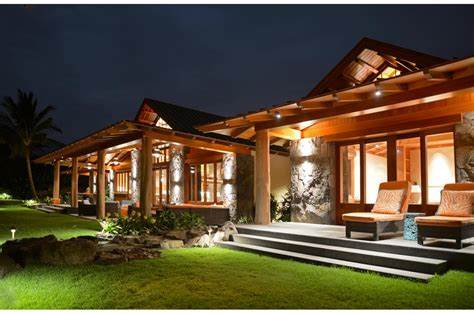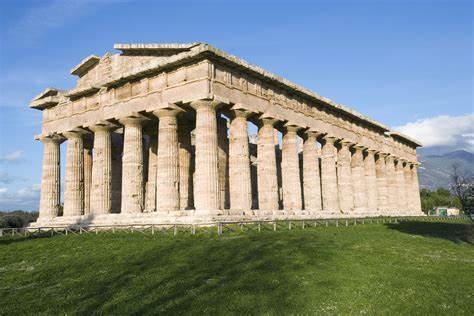Experience the allure and enchantment of traditional Hawaiian architecture as you journey through the captivating islands. From the intricately carved wooden pillars of the heiau to the meticulously thatched rooflines of the hale, Hawaiian architecture is a testament to the rich cultural heritage of the islands.
Immerse yourself in the beauty of these ancient structures, where every detail holds a story. Feel the warmth of the sun on your skin as you step into a hale, a traditional Hawaiian house, with its open-air design and natural materials. Lose yourself in the mesmerizing patterns and motifs adorning the walls of a heiau, an ancient Hawaiian temple.
Incorporating organic shapes, materials sourced from the land, and a deep respect for nature, traditional Hawaiian architecture embodies the essence of the islands. The buildings are not merely structures but an integral part of the environment, blending seamlessly with the surrounding landscapes.
Whether you are an architecture enthusiast, a cultural explorer, or simply seeking to immerse yourself in the essence of Hawaii, the traditional architecture of the islands offers a captivating journey into the heart and soul of the Hawaiian culture. Embark on this architectural odyssey and let the enchantment of Hawaii’s past come alive before your eyes.
Contents
- 1 Key Features of Traditional Hawaiian Architecture
- 2 Historical Background of Traditional Hawaiian Architecture
- 3 Influence of Nature on Traditional Hawaiian Architecture
- 4 Traditional Materials Used in Hawaiian Architecture
- 5 Types of Traditional Hawaiian Buildings
- 6 Preservation and Conservation of Traditional Hawaiian Architecture
Key Features of Traditional Hawaiian Architecture
Traditional Hawaiian architecture is characterized by several key features that reflect the unique cultural and environmental aspects of the islands. One of the prominent features is the use of natural materials. Hawaiians relied on locally available resources, such as wood, stone, and thatch, to construct their buildings. These materials not only provided practicality but also a strong connection to the land.
Another notable feature is the open-air design of traditional Hawaiian houses, known as hale. The hale typically consists of a single large room with a thatched roof and open sides, allowing for natural ventilation and a seamless transition between indoor and outdoor spaces. This design was well-suited to the tropical climate of Hawaii, providing a cool and comfortable living environment.
In addition to the open-air design, traditional ancient Hawaiian architecture also incorporates intricate woodwork and carvings. Wooden pillars, known as poupou, were often intricately carved with symbolic patterns and motifs. These carvings not only added aesthetic value but also conveyed cultural and spiritual significance.
Historical Background of Traditional Hawaiian Architecture
The origins of traditional Hawaiian architecture can be traced back to the Polynesians who first settled in the Hawaiian Islands around 1,500 years ago. These early settlers brought with them their knowledge of building techniques and materials, which laid the foundation for the development of Hawaiian architecture.
Over the centuries, Hawaiian architecture evolved and adapted to the changing needs and influences. The arrival of Western explorers and missionaries in the late 18th century introduced new building materials and construction techniques, leading to a fusion of Hawaiian and Western architectural styles.
However, with the decline of the Hawaiian monarchy in the late 19th century and the subsequent Westernization of Hawaii, traditional Hawaiian architecture faced significant challenges. Many traditional buildings were abandoned or demolished in favor of more modern structures, threatening the preservation of this unique architectural heritage.
Influence of Nature on Traditional Hawaiian Architecture
Nature has always played a significant role in shaping traditional Hawaiian architecture. The islands’ lush landscapes, volcanic terrain, and proximity to the ocean have all influenced the design and construction of Hawaiian buildings.
One aspect of nature that greatly influenced Hawaiian architecture is the climate. The tropical climate of Hawaii, with its warm and humid conditions, called for designs that maximized natural ventilation and airflow. The open-air design of the hale, with its high-pitched thatched roof and open sides, allowed for the cooling trade winds to pass through, providing natural ventilation and comfort.
The volcanic terrain of the islands also influenced the choice of building materials. Hawaiians utilized volcanic stone, such as basalt, for the construction of their temples and other important structures. The durability and strength of volcanic stone made it an ideal choice for withstanding the test of time and the harsh elements.
Traditional Materials Used in Hawaiian Architecture
Traditional Hawaiian architecture relied on locally available materials, carefully selected for their practicality, durability, and connection to the land. Wood, particularly the native koa and ohia trees, was one of the primary materials used in construction.
Koa wood, with its rich reddish-brown color and beautiful grain patterns, was highly valued and often reserved for important structures, such as heiau and royal residences. The dense and durable nature of koa wood made it perfect for carving intricate designs and supporting the weight of large roofs.
Thatch, made from the leaves of the pandanus and sugarcane plants, was used for roofing. Thatched roofs provided excellent insulation, keeping the interior cool in the tropical heat while also offering protection from the frequent rain showers.
Another important material in traditional Hawaiian architecture is stone. Hawaiians used volcanic stone, such as basalt, for the construction of walls, platforms, and other structural elements. The use of stone added strength and stability to the buildings, ensuring their longevity.
Types of Traditional Hawaiian Buildings
Traditional Hawaiian architecture encompasses a variety of building types, each serving a specific purpose and reflecting different aspects of the Hawaiian culture. One of the most iconic types of Hawaiian buildings is the heiau, an ancient Hawaiian temple.
Heiaus were sacred places of worship and were built to honor the gods and ancestors. These structures varied in size and complexity, ranging from small family shrines to large-scale temples. Heiaus were typically constructed using volcanic stone and featured intricate carvings and offerings.
Another significant type of traditional Hawaiian building is the hale, a traditional house. Hales were typically single-room structures with open sides and thatched roofs. They provided shelter for families and were designed to be easily dismantled and relocated if necessary.
Other types of traditional Hawaiian buildings include fishponds, known as loko i’a, and canoe houses, known as hale wa’a. Fishponds were constructed near the coast and were used to cultivate and harvest fish, an important food source for Hawaiians. Canoe houses, on the other hand, were used to store and protect canoes, which played a vital role in Hawaiian culture and daily life.
Preservation and Conservation of Traditional Hawaiian Architecture
Preserving and conserving traditional Hawaiian architecture is crucial for maintaining the cultural heritage of the islands. Over the years, efforts have been made to restore and protect existing structures, as well as educate the public about the importance of Hawaiian architecture.
Organizations such as the Hawaiian Historical Society and the Bishop Museum have played a significant role in documenting and preserving traditional Hawaiian architecture. Through research, documentation, and advocacy, these organizations have helped raise awareness about the cultural significance of Hawaiian buildings.
In recent years, there has been a resurgence of interest in traditional Hawaiian architecture, with more people appreciating the beauty and cultural importance of these structures. Architects and builders are incorporating elements of traditional Hawaiian design into contemporary buildings, creating a fusion of old and new.
As visitors to the islands, it is important to respect and appreciate traditional Hawaiian architecture. By learning about the history and significance of these buildings, and supporting efforts to preserve and protect them, we can ensure that future generations can continue to experience the beauty and enchantment of traditional Hawaiian architecture.
Immerse yourself in the beauty of traditional Hawaiian architecture and embark on a journey through the captivating islands. Discover the key features, historical background, and influence of nature on these ancient structures. Learn about the traditional materials used and the different types of buildings that reflect the unique culture of Hawaii. Lastly, explore the importance of preserving and conserving traditional Hawaiian architecture for future generations to appreciate and enjoy. Let the enchantment of Hawaii’s past come alive before your eyes as you experience the allure and beauty of traditional Hawaiian architecture.



